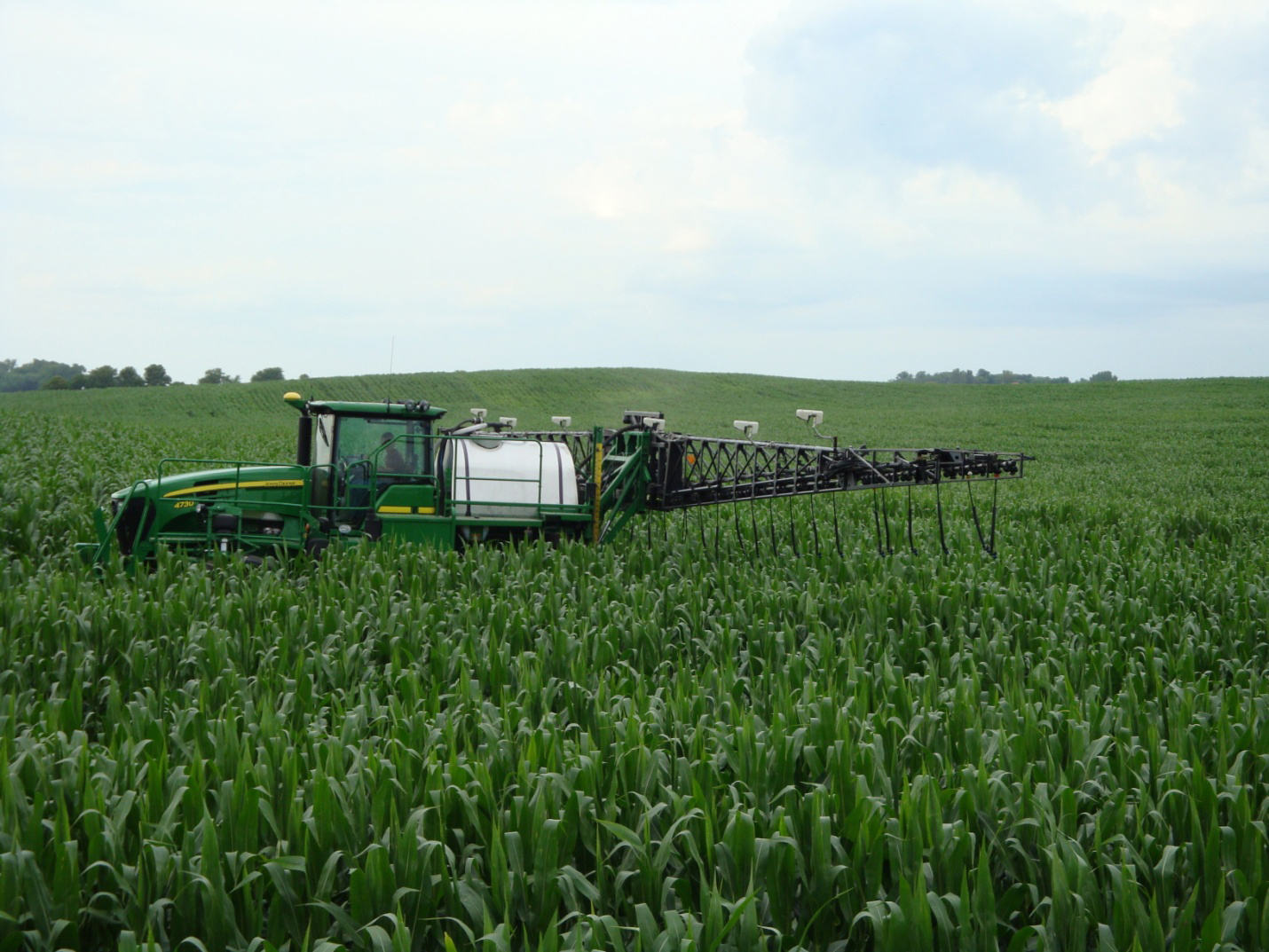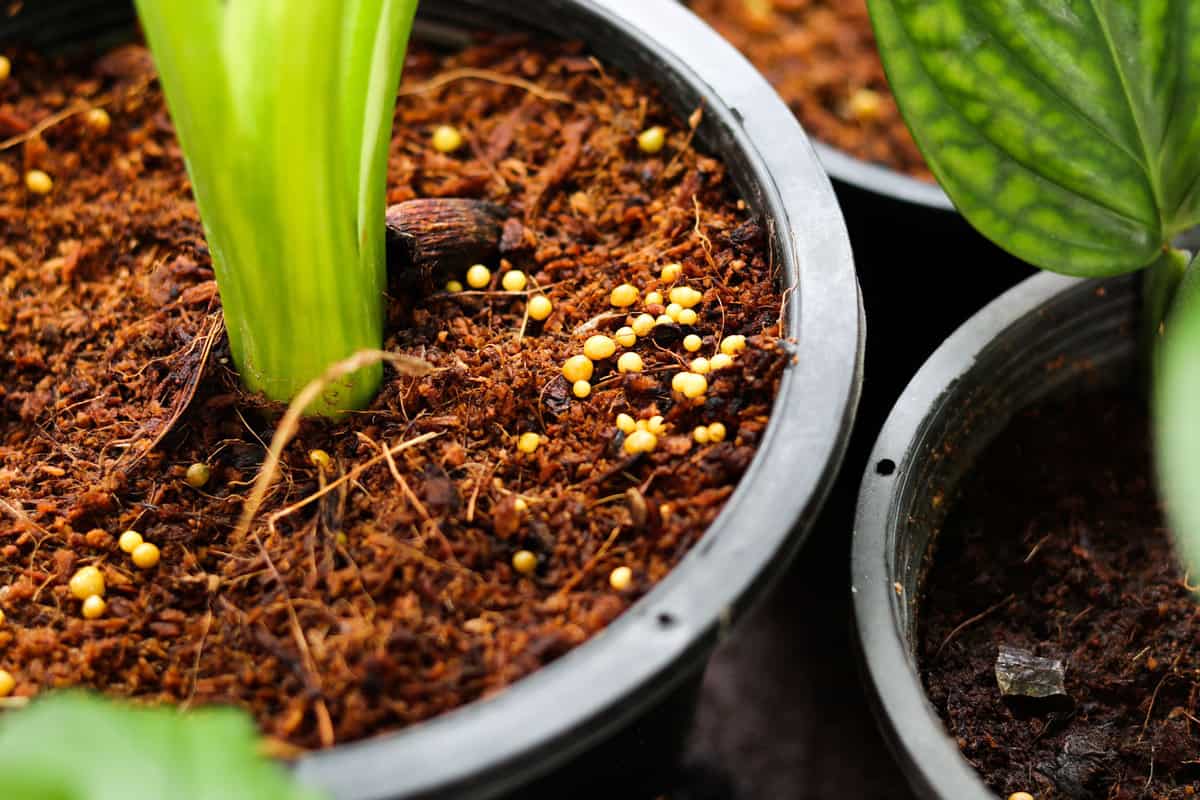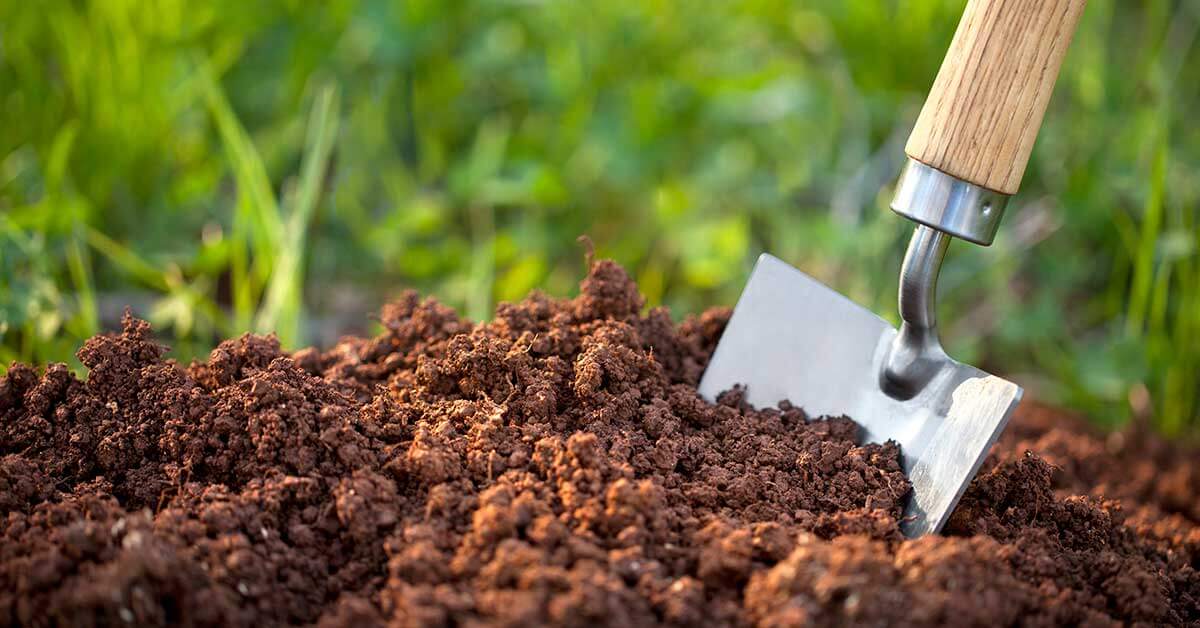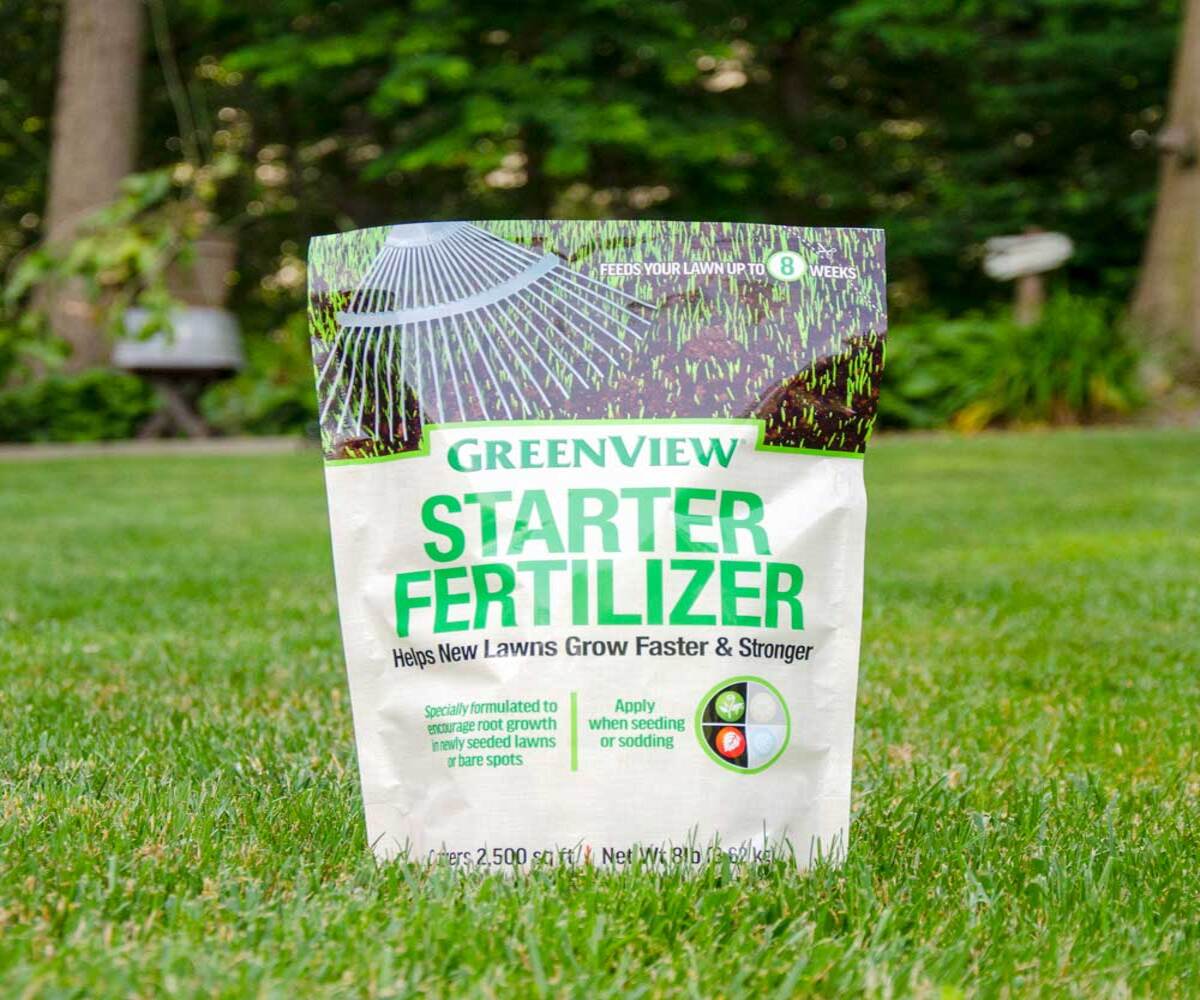Home>Gardening Basics>Why Do We Use Fertilizer


Gardening Basics
Why Do We Use Fertilizer
Modified: January 22, 2024
Discover the importance of using fertilizer for your plants and learn how to get started with this essential gardening practice.
(Many of the links in this article redirect to a specific reviewed product. Your purchase of these products through affiliate links helps to generate commission for Chicagolandgardening.com, at no extra cost. Learn more)
Table of Contents
Introduction
Welcome to the world of fertilizer! We often hear about the importance of using fertilizer for plants, but have you ever wondered why it is so crucial? Fertilizer plays a vital role in providing essential nutrients to soil, promoting healthy plant growth, and ultimately enhancing agricultural productivity. Whether you are a farmer, a gardener, or simply a plant enthusiast, understanding the significance of fertilizer can help you achieve your green thumb goals.
So, what exactly is fertilizer? In simple terms, it is a substance that is added to soil or plants to supply essential nutrients that may be lacking in the natural environment. These nutrients are necessary for plants to carry out their vital biological processes, such as photosynthesis, germination, and fruit production.
The use of fertilizer has revolutionized agriculture by addressing nutrient deficiencies in soil. Over time, intensive farming practices and the increasing demand for food have depleted the natural nutrient content in the soil. This depletion leads to stunted plant growth, decreased crop yields, and decreased nutritional value in the food we consume. By providing a boost of nutrients, fertilizers replenish the soil and ensure that plants receive the nutrition they need to thrive.
But how exactly does fertilizer work? Fertilizers consist of different combinations of three primary nutrients: nitrogen (N), phosphorus (P), and potassium (K). These essential macronutrients are represented by the numbers on fertilizer packaging, known as the NPK ratio. Nitrogen promotes leafy growth, phosphorus aids in root development and flowering, while potassium contributes to overall plant health and disease resistance.
There are various types of fertilizers available, including organic and synthetic options. Organic fertilizers are derived from natural sources such as animal manure, compost, and bone meal. They release nutrients slowly and improve soil structure, but their nutrient content may be lower compared to synthetic fertilizers. On the other hand, synthetic fertilizers are chemically formulated to provide a rapid nutrient boost and have a higher nutrient concentration. However, they may have negative environmental impacts if not used responsibly.
Speaking of environmental impacts, the use of fertilizers has both benefits and drawbacks. While they contribute to increased agricultural productivity, improper use and excessive application can lead to water pollution, soil degradation, and harm to biodiversity. Therefore, it’s crucial to practice responsible fertilizer use by following best management practices, such as applying the right amount at the right time and avoiding runoff.
In this article, we will explore the fascinating world of fertilizers, discuss the different types available, delve into the environmental considerations, and provide best practices for using them effectively. So, let’s dig deep into the soil and uncover the secrets of fertilizer!
What is Fertilizer?
Fertilizer is a substance that is added to soil or plants to provide essential nutrients that may be lacking in the natural environment. These nutrients are vital for plants to carry out their biological processes and achieve optimal growth and development.
In nature, plants obtain nutrients from the soil through their root systems. However, over time, intensive farming practices and environmental factors can deplete the natural nutrient content in the soil. As a result, plants may exhibit signs of nutrient deficiency, such as stunted growth, yellowing leaves, and reduced crop yields.
Fertilizers bridge this nutrient gap by supplying plants with the necessary elements to thrive. They come in various forms, such as powders, granules, or liquids, and are typically applied to the soil or sprayed onto the plant foliage.
There are three primary macronutrients that are essential for plant growth: nitrogen (N), phosphorus (P), and potassium (K). These nutrients are often referred to as NPK and are represented by the corresponding numbers on fertilizer packaging. Each nutrient plays a key role in different aspects of plant development.
Nitrogen is essential for promoting lush leafy growth and is responsible for the vibrant green color of plant foliage. Phosphorus is crucial for root development, flowering, and fruit production. It is also involved in energy transfer processes within the plant. Potassium, also known as potash, aids in overall plant health and helps plants to withstand stresses such as drought, disease, and cold temperatures.
In addition to these macronutrients, fertilizers can also contain secondary nutrients such as calcium, magnesium, and sulfur, as well as micronutrients like iron, zinc, and manganese. These secondary and micronutrients are required in smaller quantities but are equally important for plant growth and development.
It is important to note that while fertilizers provide essential nutrients to plants, they should be used judiciously and in accordance with plant requirements. Excessive or improper use of fertilizers can lead to nutrient imbalances, soil pollution, and harm to the surrounding environment.
In the next section, we will delve deeper into the importance of fertilizer and how it addresses nutrient deficiencies in the soil. So, let’s continue our journey into the fascinating world of fertilizers!
The Importance of Fertilizer
Fertilizer plays a crucial role in ensuring healthy plant growth and enhancing agricultural productivity. It addresses nutrient deficiencies in soil and provides plants with the essential elements they need to thrive. Let’s explore the importance of fertilizer in more detail.
One of the primary reasons why fertilizer is important is that it replenishes nutrient-depleted soils. Over time, intensive farming practices, such as repetitive planting and harvesting, can strip the soil of essential nutrients. When the nutrient content in the soil is insufficient, plants struggle to grow and develop properly. By adding fertilizer, farmers and gardeners can restore the nutrient balance in the soil and ensure that plants have an adequate supply of the nutrients they require.
Fertilizer also plays a significant role in increasing crop yields. When plants have access to an ample supply of nutrients, they can grow more vigorously, produce larger fruits or flowers, and achieve higher overall yields. This is especially important in agricultural systems where there is a high demand for food production. By using fertilizer, farmers can maximize their crop yields and meet the growing global food demand.
In addition to increasing yields, fertilizer can also improve the nutritional value of crops. Essential nutrients provided by fertilizers contribute to the plant’s ability to synthesize vitamins, minerals, and other beneficial compounds. As a result, crops enriched with these nutrients can provide higher levels of nutrition to consumers, promoting overall health and well-being.
Furthermore, fertilizer aids in the development of healthy and robust plant root systems. Phosphorus, one of the primary nutrients in fertilizer, is particularly crucial for root growth and development. Strong root systems allow plants to absorb water and nutrients more efficiently, making them more resilient to drought, environmental stresses, and diseases.
Fertilizer also contributes to the sustainability of agricultural practices. By ensuring optimal plant nutrition, farmers can reduce the need for synthetic pesticides and herbicides. Well-nourished plants are better equipped to fend off pests and diseases naturally, reducing the reliance on chemical interventions. This, in turn, leads to a healthier and more environmentally friendly farming system.
Overall, the importance of fertilizer cannot be overstated. It is a critical tool for maintaining soil fertility, increasing crop yields, improving nutritional value, promoting plant health, and enhancing sustainable agricultural practices. By utilizing fertilizers effectively and responsibly, we can support the growth of healthy plants, ensure food security, and protect the environment.
Nutrient Deficiencies in Soil
Soil is the foundation for plant growth, providing a rich and diverse ecosystem that supports the development of healthy plants. However, over time, soil can become depleted of essential nutrients, leading to nutrient deficiencies that hinder plant growth and productivity. Understanding these nutrient deficiencies is crucial for effectively addressing them with the use of fertilizers. Let’s explore some common nutrient deficiencies in soil.
Nitrogen (N) deficiency is one of the most prevalent nutrient deficiencies in soils. Nitrogen is a vital nutrient for plant growth, as it is a key component of amino acids, proteins, and chlorophyll. When soil lacks sufficient nitrogen, plants exhibit stunted growth, yellowing leaves (chlorosis), and overall reduced vigor. Nitrogen deficiency is often associated with low organic matter content in the soil and can be remedied by using nitrogen-rich fertilizers, such as ammonium nitrate or urea.
Phosphorus (P) deficiency is another common nutrient limitation in soils. Phosphorus is essential for root development, energy transfer, and the production of flowers and fruits. When plants lack sufficient phosphorus, their growth is stunted, and they may have smaller, underdeveloped roots. Leaves may appear dark green or purple, and they may exhibit delayed maturity. Phosphorus deficiency can be corrected by applying fertilizers containing high concentrations of phosphorus, such as triple superphosphate or bone meal.
Potassium (K) deficiency is often observed in sandy soils or soils that have been intensively cultivated. Potassium is crucial for overall plant health, as it regulates water uptake, aids in photosynthesis, and improves disease resistance. Plants suffering from potassium deficiency may have yellow or brown leaf margins and exhibit poor root development. Applying potassium-rich fertilizers, such as potassium chloride or potassium sulfate, can help rectify this deficiency.
In addition to these macronutrients, soil can also experience deficiencies in secondary and micronutrients. Calcium (Ca), magnesium (Mg), and sulfur (S) are considered secondary nutrients, and their deficiencies can lead to issues such as poor cell division, yellowing between leaf veins, and reduced plant growth. Micronutrient deficiencies, such as iron (Fe), manganese (Mn), and zinc (Zn), can cause leaf discoloration, stunted growth, and reduced fruit production. Adding fertilizers that contain these secondary and micronutrients can help correct the deficiencies and support healthy plant growth.
Identifying nutrient deficiencies in soil is crucial for determining the appropriate fertilizers and amendments needed to rectify the imbalances. Conducting soil tests, observing plant symptoms, and consulting with agricultural professionals can aid in diagnosing nutrient deficiencies accurately. By addressing these deficiencies with the appropriate fertilizers, we can ensure optimal nutrient availability, promote healthy plant growth, and maximize agricultural productivity.
How Fertilizer Works
Have you ever wondered how fertilizer works its magic in promoting plant growth? Fertilizers contain essential nutrients that plants need to thrive, and understanding how these nutrients interact with plants and the soil is key to harnessing the benefits of fertilization.
When fertilizer is applied to the soil or foliage, the nutrients within it become available to the plants. The three primary nutrients found in most fertilizers are nitrogen (N), phosphorus (P), and potassium (K), also known as NPK. Each of these nutrients serves a specific purpose in supporting plant development.
Nitrogen is responsible for promoting vegetative growth and enhancing the green color of plant foliage. It is an essential component of amino acids, proteins, and chlorophyll, all of which play critical roles in various biological processes within plants. Nitrogen is readily taken up by plant roots and is involved in the production of new cells and plant structures.
Phosphorus is vital for root development, flowering, fruiting, and overall energy transfer within plants. It is involved in processes such as photosynthesis, respiration, and the formation of nucleic acids and DNA. Phosphorus encourages robust root growth, leading to improved nutrient uptake and water absorption by plants.
Potassium is essential for overall plant health and plays a role in numerous physiological processes, including enzyme activation, water regulation, and the synthesis of carbohydrates and proteins. Potassium improves the efficiency of water use by plants, enhances disease resistance, and aids in the overall development and functioning of plant tissues.
Once absorbed by the plant roots, these essential nutrients are transported to the areas where they are needed most. Nitrogen is primarily transported upward to the leaves, supporting leafy growth and the synthesis of chlorophyll. Phosphorus and potassium are distributed throughout the plant, contributing to root development, flower formation, and overall plant health.
In addition to NPK, fertilizers may also contain secondary nutrients such as calcium, magnesium, and sulfur, as well as essential micronutrients like iron, manganese, and zinc. These additional nutrients play vital roles in specific plant functions, ensuring a well-rounded and balanced nutrient supply.
Fertilizers can be applied to plants through various methods, including broadcasting granules in the soil, injecting liquid fertilizers into irrigation systems, or spraying foliar fertilizers directly onto plant leaves. The choice of application method depends on factors such as the crop type, soil conditions, and nutrient requirements of the plants.
It is important to note that while fertilizers provide essential nutrients, they should be used judiciously, following recommended application rates and schedules. Over-application of fertilizers can lead to nutrient imbalances, environmental pollution, and negative impacts on plant health.
Understanding how fertilizers work empowers farmers, gardeners, and plant enthusiasts to harness the benefits of nutrient supplementation effectively. By supplying plants with the necessary nutrients in the right quantities and at the appropriate times, we can optimize plant growth, enhance crop yields, and foster healthy and vibrant vegetation.
Types of Fertilizers
When it comes to fertilizers, there are various types available, each with its own characteristics and benefits. Choosing the right type of fertilizer depends on factors such as crop type, soil conditions, and specific nutrient requirements. Let’s explore some common types of fertilizers:
1. Organic Fertilizers: Organic fertilizers are derived from natural sources, such as animal manure, compost, bone meal, and plant matter. These fertilizers release nutrients slowly and gradually, providing a steady and consistent supply to plants. Organic fertilizers also improve soil structure and increase microbial activity, enhancing long-term soil health and fertility. They are an excellent choice for organic farming practices and environmentally friendly gardening.
2. Synthetic Fertilizers: Synthetic fertilizers, also known as inorganic or chemical fertilizers, are manufactured using chemical processes. They typically have higher nutrient concentrations and provide a rapid nutrient boost to plants. Synthetic fertilizers are often available in various formulations and can be customized to meet specific plant nutrient needs. They are widely used in conventional agriculture and are easily accessible. However, synthetic fertilizers should be used carefully and in accordance with recommended application rates to avoid nutrient imbalances and negative environmental impacts.
3. Slow-Release Fertilizers: Slow-release fertilizers are designed to release nutrients gradually over an extended period. These fertilizers come in different forms, such as coated granules or pelleted formulations. Slow-release fertilizers provide a continuous supply of nutrients to plants, reducing the risk of nutrient leaching and minimizing the need for frequent reapplication. They are ideal for situations where plants require a consistent nutrient source, such as in container gardening or landscape maintenance.
4. Liquid Fertilizers: Liquid fertilizers are soluble formulations that provide nutrients in liquid form. They are easy to apply and can be absorbed by plant roots or sprayed onto plant foliage. Liquid fertilizers are quickly absorbed by plants, making them an excellent choice for providing an immediate nutrient boost. They are often used in commercial agriculture, hydroponics, and foliar feeding techniques.
5. Controlled-Release Fertilizers: Controlled-release fertilizers are designed to release nutrients over a specific period, based on factors like temperature, moisture, and microbial activity in the soil. These fertilizers are typically coated or encapsulated, allowing for gradual nutrient release. Controlled-release fertilizers provide a more controlled and sustained nutrient supply, reducing the risk of nutrient loss and ensuring efficient uptake by plants.
It’s important to consider the specific nutrient requirements of your plants and the goals of your gardening or farming practices when selecting a fertilizer type. Some plants may benefit from organic fertilizers to improve soil health, while others may require synthetic fertilizers for targeted nutrient supplementation. Experimenting with different fertilizers and observing the response of your plants can help you determine the most effective fertilizer type for your specific needs.
Remember that regardless of the type of fertilizer you choose, it is essential to follow recommended application rates and timings to avoid over-fertilization and the associated negative environmental impacts. Understanding the different types of fertilizers empowers you to make informed decisions and promote healthy plant growth and productivity.
Organic vs. Synthetic Fertilizers
When it comes to fertilizers, there is often a debate between organic and synthetic options. Both types have their advantages and considerations, and understanding the differences can help you make an informed choice for your gardening or farming practices. Let’s explore the characteristics of organic and synthetic fertilizers:
Organic Fertilizers:
– Organic fertilizers are derived from natural sources, such as animal manure, plant matter, compost, and bone meal.
– They release nutrients slowly and gradually, providing a steady supply of nutrition to plants over time.
– Organic fertilizers improve soil structure, increase microbial activity, and enhance long-term soil health and fertility.
– They contribute to the development of beneficial soil organisms, which help break down organic matter and improve nutrient availability to plants.
– Organic fertilizers are suitable for organic farming practices and environmentally friendly gardening.
– They have lesser risk of nutrient leaching, which can result in water pollution.
– However, organic fertilizers may have lower nutrient concentrations compared to synthetic fertilizers, requiring larger quantities for the same nutrient input.
Synthetic Fertilizers:
– Synthetic fertilizers, also known as inorganic or chemical fertilizers, are manufactured through chemical processes.
– They often have higher nutrient concentrations, providing a rapid and immediate nutrient boost to plants.
– Synthetic fertilizers are available in various formulations, designed to meet specific nutrient requirements of different plants.
– They are easily accessible and widely used in conventional agriculture.
– However, synthetic fertilizers should be used carefully and in accordance with recommended application rates to avoid nutrient imbalances, environmental pollution, and negative impacts on soil health.
– Overuse or improper application of synthetic fertilizers can contribute to water pollution through runoff, leading to algal blooms and degradation of aquatic ecosystems.
– Synthetic fertilizers may not contribute to long-term improvements in soil health and may have a negative impact on beneficial soil organisms.
When choosing between organic and synthetic fertilizers, it is important to consider your specific needs, gardening or farming practices, and environmental concerns. Organic fertilizers are a sustainable choice, contributing to improved soil health and long-term fertility. They are well-suited for organic farming practices, promoting natural nutrient cycling and reducing environmental impacts. On the other hand, synthetic fertilizers provide a quick and targeted nutrient boost, making them convenient for meeting specific plant nutrient requirements. However, their use should be approached with caution to avoid environmental harm and potential nutrient imbalances.
Ultimately, finding a balance between organic and synthetic fertilizers and adopting best management practices is key. Combining the benefits of organic matter and natural nutrient cycling with the targeted nutrient supplementation of synthetic fertilizers can contribute to optimal plant growth, sustainable agriculture, and environmental stewardship.
Environmental Impacts of Fertilizer Use
The use of fertilizers has undeniable benefits in promoting plant growth and enhancing agricultural productivity. However, it is important to recognize and address the potential environmental impacts associated with their use. Let’s explore some of the key environmental considerations related to fertilizer use:
1. Nutrient Runoff: One of the major environmental concerns associated with fertilizer use is the potential for nutrient runoff. When fertilizers are applied in excessive amounts or during periods of heavy rainfall, the nutrients can be carried away by runoff into nearby water bodies. This can lead to eutrophication, where excessive nutrient levels cause algal blooms, oxygen depletion, and harm to aquatic ecosystems.
2. Groundwater Contamination: Improper use or over-application of fertilizers can result in the leaching of nutrients into the groundwater. Nitrate, in particular, is a concern as excessive levels can contaminate drinking water sources and pose health risks, especially for infants and pregnant women. High nitrate levels can also contribute to the formation of harmful nitrosamines.
3. Soil Degradation: Excessive or improper use of fertilizers can lead to soil degradation. Over-reliance on synthetic fertilizers without adequate organic matter input can disrupt natural soil processes, reduce microbial activity, and degrade soil structure. This can result in nutrient imbalances, decreased water-holding capacity, and reduced overall soil fertility and health.
4. Biodiversity Impact: Fertilizer use can have unintended consequences for biodiversity. Excessive nutrient levels in ecosystems can favor the growth of certain plant species over others, leading to shifts in plant communities and potential loss of biodiversity. Additionally, nutrient runoff into water bodies can cause harm to aquatic organisms, including fish, amphibians, and invertebrates.
5. Air Pollution: The production and application of certain fertilizers can contribute to air pollution. Synthetic fertilizers may release greenhouse gases, such as nitrous oxide, during their production and use. Ammonia emissions from fertilizers can also contribute to air pollution, leading to issues such as smog formation and reduced air quality.
To mitigate these environmental impacts, several best practices can be implemented:
– Apply fertilizers at recommended rates and timings to avoid over-application.
– Use slow-release or controlled-release fertilizers to minimize nutrient leaching and runoff.
– Incorporate organic matter into the soil to improve nutrient retention and soil structure.
– Implement precision agriculture techniques to precisely target fertilizer application, reducing waste and environmental impacts.
– Utilize cover crops and crop rotation practices to reduce fertilizer needs and enhance soil health.
– Implement buffer zones along water bodies to intercept and filter nutrient runoff.
– Practice responsible nutrient and soil management, including soil testing and proper nutrient budgeting.
By adopting these best practices and promoting responsible fertilizer use, we can minimize the environmental impacts associated with their use and work towards sustainable and environmentally friendly agricultural practices.
Best Practices for Using Fertilizers
Using fertilizers responsibly is crucial for maximizing their benefits while minimizing potential negative impacts on the environment and plant health. Here are some best practices to consider when using fertilizers:
1. Soil Testing: Start by conducting a soil test to determine the nutrient levels and pH of your soil. Soil testing helps identify any nutrient deficiencies or imbalances, allowing you to tailor your fertilizer application accordingly. This ensures that you provide only the necessary nutrients, avoiding over-application.
2. Follow Recommended Application Rates: Always follow the recommended application rates provided by fertilizer manufacturers or agricultural extension services. Over-application of fertilizers not only wastes resources but can also lead to nutrient runoff and environmental pollution. Applying the right amount of fertilizer ensures optimal plant nutrition without excessive nutrient inputs.
3. Timing of Application: Apply fertilizers at the appropriate time to coincide with the plants’ nutrient demands. Different stages of plant growth require varying nutrient inputs. For example, nitrogen is crucial during periods of rapid growth, while phosphorus aids in root development and flowering. By timing fertilizer applications correctly, you optimize nutrient uptake and minimize loss due to leaching or runoff.
4. Fertilizer Placement: Place fertilizers strategically for maximum efficiency. Broadcasting granular fertilizers evenly over the soil surface is an option for large areas, while banding or side-dressing near the plant roots can provide more targeted nutrient delivery. Incorporating fertilizers into the soil can also minimize nutrient loss through runoff and enhance nutrient availability to plants.
5. Use Slow-Release or Controlled-Release Fertilizers: Consider utilizing slow-release or controlled-release fertilizers to provide nutrients over an extended period. These fertilizers release nutrients gradually, reducing the risk of leaching and runoff. Slow-release fertilizers are particularly beneficial in areas prone to heavy rainfall or in sandy soils with low nutrient-holding capacity.
6. Incorporate Organic Matter: Improve soil health and fertility by incorporating organic matter into the soil. Organic matter enhances nutrient retention, improves soil structure, and promotes microbial activity. Adding compost, cover crops, or organic amendments can gradually release nutrients and improve overall soil health, reducing the need for excessive synthetic fertilizer inputs.
7. Monitor Plant Response: Regularly observe and monitor your plants for signs of nutrient deficiencies or excesses. Adjust your fertilizer application if necessary based on plant response. Timely identification and correction of nutrient imbalances will prevent further plant stress and facilitate healthy growth.
8. Water Management: Proper water management is crucial to minimize the loss of nutrients through leaching and runoff. Irrigate plants consistently and efficiently, avoiding excessive water use. Monitor soil moisture levels to prevent waterlogging, which can lead to nutrient leaching and root rot. Implementing irrigation techniques that deliver water directly to the root zone can also reduce water and fertilizer wastage.
9. Store and Handle Fertilizers Safely: Follow proper storage and handling procedures for fertilizers to prevent accidents and environmental contamination. Keep fertilizers in a secure and dry area, away from children, pets, and potential water sources. Take precautions to avoid spills, and properly dispose of any unused or expired fertilizers following local regulations.
10. Continuous Learning: Stay informed about best practices in fertilizer use. Keep up with advancements in fertilizer technology, sustainable farming techniques, and environmental stewardship. Attend workshops, consult agricultural experts, and engage with local agricultural extension services to enhance your knowledge and skills in responsible fertilizer use.
By implementing these best practices, you can ensure the efficient and responsible use of fertilizers. This promotes optimal plant growth, reduces environmental impacts, and contributes to sustainable agriculture and gardening practices.
Conclusion
Fertilizer plays a vital role in promoting healthy plant growth, replenishing nutrient-depleted soils, and enhancing agricultural productivity. By supplying essential nutrients to plants, fertilizers address nutrient deficiencies and ensure optimal growth and development. However, it is important to use fertilizers responsibly to minimize environmental impacts and maximize their benefits.
In this article, we explored the different types of fertilizers available. Organic fertilizers, derived from natural sources, provide slow and steady nutrient release, promoting soil health and sustainability. Synthetic fertilizers offer quick nutrient boosts but should be used judiciously to prevent nutrient imbalances and environmental pollution.
We also examined the environmental implications of fertilizer use. Nutrient runoff, groundwater contamination, soil degradation, biodiversity impact, and air pollution are among the concerns associated with fertilizer use. However, by following best practices, such as proper application rates, timing, and placement, we can mitigate these impacts and promote environmental stewardship.
Implementing soil testing, using slow-release or controlled-release fertilizers, incorporating organic matter, and monitoring plant response are key best practices for using fertilizers effectively. Water management, safe storage, and continuous learning also contribute to responsible fertilizer use.
The responsible use of fertilizers is crucial for sustainable agriculture, healthy ecosystems, and food security. By understanding the importance of fertilizers, being mindful of their environmental impacts, and adopting best practices, we can ensure optimal plant growth, enhance agricultural productivity, and protect the environment for future generations.










